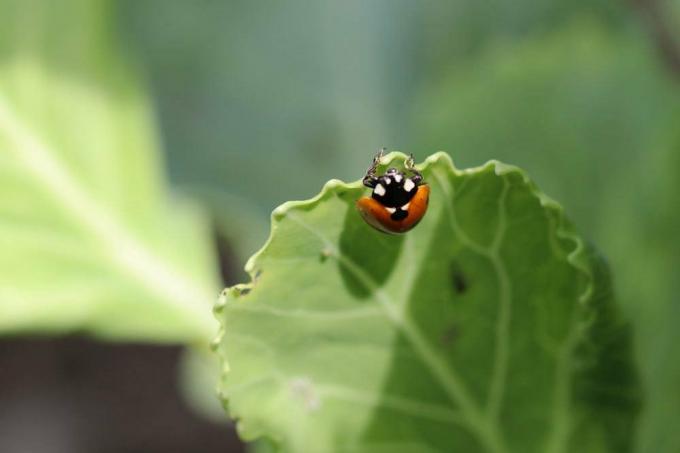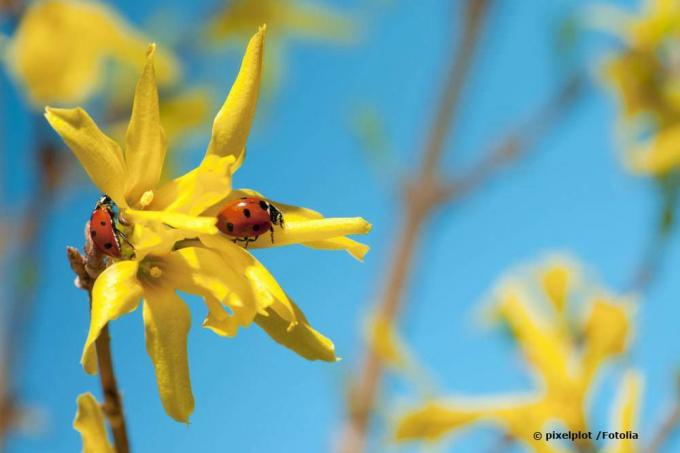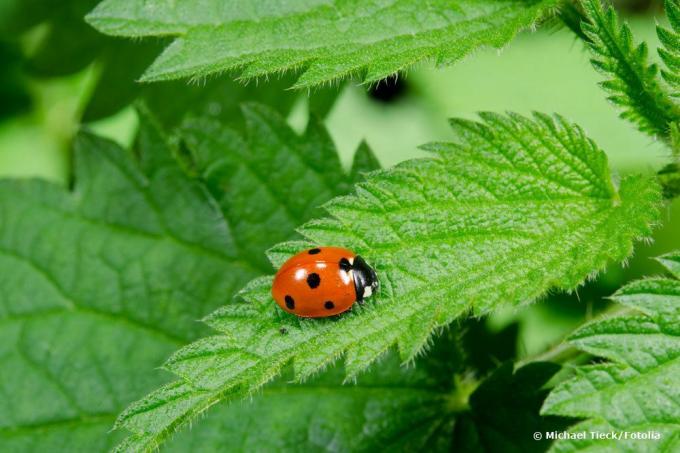
table of contents
- Species and feeding behavior
- Overwinter
- Foraging
- Winter quarters
- Winter aids
- Wintering in human living spaces
- Expose
- House wintering
If you carefully observe nature in autumn, you will see many ladybugs on house walls, plants and balcony railings. Because now the time has come when the little lucky charms are looking for suitable winter quarters. Since ladybugs hibernate alone only in exceptional cases, they come together in groups and even large swarms to find protection from the cold season. In addition, they will find their sexual partner for spring in large gatherings and can thus ensure the continued existence of the species.
Species and feeding behavior
The ladybird family (Coccinellidae) consists of around 4,000 species. Over 70 species are native to this country. The best known species is the seven-spotted ladybird (Coccinella septempunctata). The insects feed mainly on aphids and / or scale insects, but spider mites, bed bugs and the larvae of beetles and sawfly are also on their menu. They are beneficial insects and are bred for biological pest control.
Overwinter
Depending on the species, Coccinellidae survives the cold season in the form of hibernation or rigidity. When the ambient temperature drops to around 12 ° C, the small bugs' breathing and heartbeat slow down and they go into hibernation. The animals fall into freeze when the outside temperature drops to zero degrees Celsius and below. The body temperature is then around zero degrees and all important organs work on the "low flame". Species that do not fall into winter rigor protect themselves from the frosty temperatures with fat pads. They also move close to each other to keep each other warm.
Foraging
In order to get through the winter, those ladybird species that do not fall into winter rigor build fat deposits, which they feed on throughout the winter. If the temperatures rise to around 8 ° C for a long time in winter, the small beetles wake up and go in search of food. And this natural behavior can be fatal for the beetles, as they cannot find food in winter and their fat reserves are used up too soon.
Winter quarters
Ladybugs prefer hollow spaces for hibernation, because there they can make themselves really comfortable. It is important that the area is warm and humid. Therefore, cracks in walls or rafters are a good place for them to overwinter. But lucky charms don't just find suitable winter quarters at the house. You can also offer the little beetles an ideal shelter for the cold season in the garden. Ladybugs, for example, like to use a pile of leaves to hibernate. Other ideal winter quarters for the little beetles are:
- Tree hollows
- Tree bark columns
- taller grass
- Insect hotels
- under layers of moss or under stones
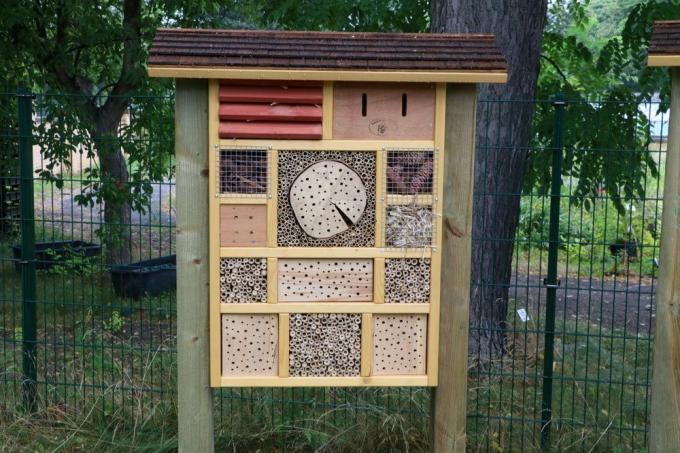
Winter aids
If you don't have a garden, you can offer the insects a winter aid on the balcony. To do this, drill an entrance hole with a diameter of about 8 millimeters in a wooden box about 10 by 10 centimeters. Line the inside of the wooden box with wood wool and / or autumn leaves. A water protection on the top of the box protects the insects from rain.
tip: So that the little beetles can also find their winter quarters, you should set them up in an elevated position. It is best to put it in a balcony box or planter with a sturdy stick.
Wintering in human living spaces
If autumn and winter are cold from the point of view of the lucky charms, they will stay in their winter quarters until next spring. If the temperature rises, then they leave the winter quarters and go in search of food. Because the warmer weather signals to the ladybirds that spring has come. It can happen that ladybugs get lost in human living spaces while searching for food in winter. However, since they cannot find food there, this is not a good option for the small beetles. In addition, their activity increases with every degree Celsius, which in turn means that their fat reserves are used up even faster.
This is why the best way to help stray ladybugs is by bringing them back outside. Because there they fall into hibernation as soon as the temperatures drop again. So that the small beetles do not freeze to death, you should leave them in the vicinity of suitable winter quarters.
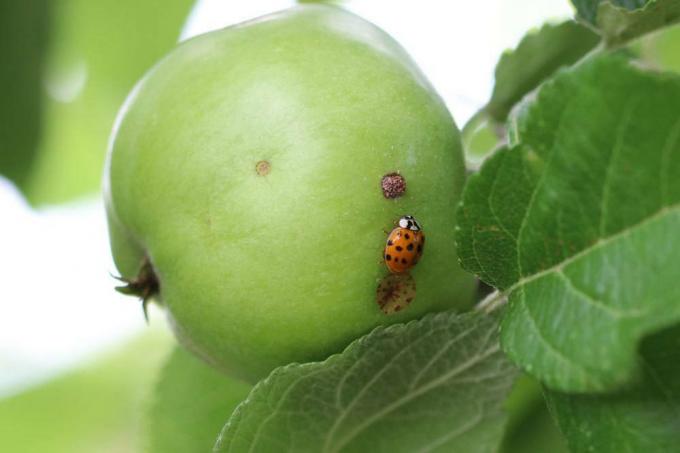
tip: If the temperature difference between inside and outside is very large, you should give the lucky charms an opportunity to get used to the outside temperatures. A protected shed or the winter garden is suitable for this.
Expose
Be careful with the small bugs when catching and releasing them. If several of the small beetles have lost their way into your living space, you can also catch the insects with a vacuum cleaner and a sock with elastic cuffs:
- Put the cuffs on the end of the suction tube
- Press the rest of the sock into the inside of the suction tube as a safety net
- suck up the animals with very weak poultry performance
- Close the sock
- Turn off the vacuum cleaner
- Carefully pull the sock out of the suction tube
- Release the beetle in a suitable place by gently shaking the sock
House wintering
If it is not possible to release the animals, you can also offer them their apartment as winter quarters. However, you then also have to look for appropriate Food sources care for. One possibility is to bring the animals close to plants that have been exposed to aphids or aphids during the winter. Spider mites are afflicted. If this food source has dried up, you should buy special rearing kits for ladybugs in stores. They contain food that is also suitable for adult beetles.
tip: Wintering the house should only be carried out in emergencies, as it does not correspond to the natural life cycle of the insects.

